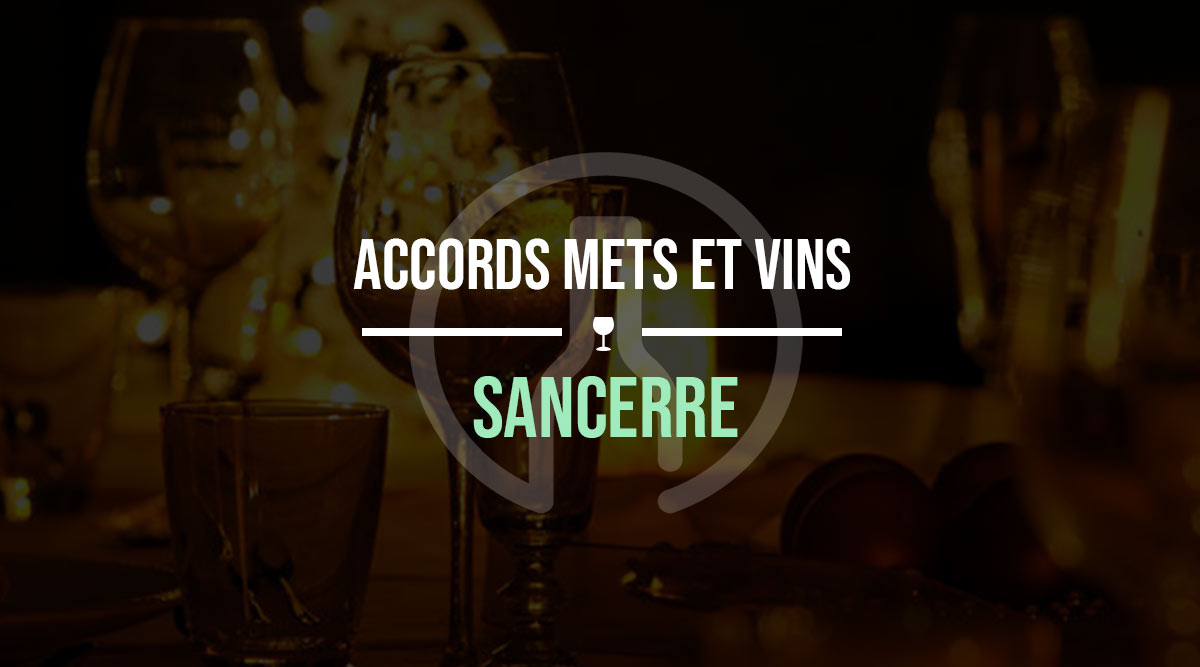Welcome to Comptoir des Millésimes, your online wine merchant for rare wines and great vintages ! During this time of confinement, we present our guide to Sancerre wine and food pairing. It's the perfect time to learn something new every day! Here are our tips for pairing your superb Loire wine!
Sancerre wines
Sancerre is a world-famous vineyard with a good reputation.
Produced in the Cher department of the Centre-Val de Loire region, Sancerre wines benefit from a degraded oceanic climate, which means lower rainfall, harsher winters and cooler summers than an oceanic climate.
All three colors are produced in the appellation. The white wines, made from Sauvignon grapes, were awarded AOC status in 1936, while the reds and rosés, made from Pinot Noir grapes, were awarded AOC status later, in 1959.
The vineyard covers 2,999 hectares and benefits from very rich soils: Kimmeridgian marl soils to the west, stony limestone soils in the center, and flint-rich siliceous soils further east.
Discover our Sancerre wines in stock
Sancerre wine tasting guide
-
How to accompany a Sancerre Rosé?
Sancerre Rosé wines are made from Pinot Noir grapes. They are generally quite dark in color.
To enjoy them at their best, they should be drunk chilled, at a temperature of 10°. There's no need to open them first, but simply serve them in "white wine" type glasses, i.e. fine but long, to allow the aromas to rise gently up the chimney.
-
How to accompany a Sancerre Rouge?
There are two ways to enjoy a red Sancerre, depending on the style of wine.
If it's a light, round, easy-drinking Sancerre, you can cool it down a little (for a summer aperitif or barbecue). In this case, serve it at around 12°-13°, so as not to break up the aromas too much and bring out the wine's bitterness.
As for the more elaborate Sancerres (which have undergone barrel ageing and come from very rich, and therefore very mineral, soils), they should be aged for a few years. On average, 6-8 years will be necessary to fully appreciate them. Once this period has elapsed, open your bottle 2 hours beforehand and taste 2cl to determine whether further aeration is necessary. It is not advisable to decant a Sancerre several years old, as Pinot Noir is a volatile grape variety, and you risk losing all the aromas.
-
How to accompany a Sancerre Blanc?
It's a bit like the Sancerre Rouge.
For simple, fruity Sancerre Blancs, there's no need for extensive preparation. Serve at a temperature of 9°-10° in white wine glasses, to be enjoyed fresh.
For Sancerre wines that have benefited from ageing or special terroirs, you'll need to be a little patient. Wait 4 to 5 years for the barrel to fade and give way to the wine's minerality. For great estates, on great years, you can wait 10 years without worry! For these wines, enjoy them at a temperature of 10°-11° to release their full potential.
What to eat with a Sancerre wine?
For Sancerre the fruitiest, rounder wines can be served as an aperitif.
In summer, with gambas or lightly spiced appetizers, and in winter, with charcuterie and a few pieces of cheese.
White Sancerres often have citrus, lemon and honeysuckle aromas. That's why fish accompanied by lemon or citrus zest, or a hollandaise sauce, is a perfect match.
Of course, goat's cheeses are perfect. The texture of the cheese will calm the acidity of the wine, allowing the aromas to express themselves.
Sancerres reds with ageing are more sophisticated and complex. They are generally very fine and silky on the palate. They release notes of fruit (wild cherries), humus, spices and a light woodiness. A salt-crusted knuckle of pork would be perfect, very aromatic without being too strong.
Barbecued red meats with a light accompaniment such as steamed vegetables or baked potatoes can also go well with them.





![✨ Comptoir des Millésimes honors Champagne's great winemakers ✨[LINK TO THE ORGANIC CELLAR]We've selected 11 exceptional estates that reveal the full richness of Champagne terroir through unique, refined cuvées. Hugues Godmé - In Verzenay, this family-run biodynamic estate offers precise, vibrant champagnes with a beautiful mineral tension.Egly-Ouriet - A benchmark for the Montagne de Reims, its powerful champagnes, aged for long periods in barrel, impress with their complexity.Moussé Fils - In Cuisles, the Meunier grape is king. Pertois-Moriset - Pure, taut Chardonnay Grands Crus for lovers of chalky finesse. A fine address in Mesnil-sur-Oger.Geoffroy - In Aÿ, this domaine produces fine champagnes, carefully crafted and barrel-aged to reveal the full complexity of the terroir.Larmandier-Bernier - Biodynamic viticulture, exceptional parcels and purity. Crystal-clear, intense champagnes for connoisseurs.Roger Coulon - Eight generations of expertise at Vrigny. Balanced, subtle and elegant champagnes.A. Bergère - In Avize, a dynamic house offering expressive, fruity and accessible cuvées.Adrien Renoir - A promising talent from Verzy, he produces fine, complex champagnes with a true sense of terroir.De Sousa - Emblematic house in Avize. Richness, depth, long ageing: Chardonnay at its peak.Pierre Paillard - In Bouzy, the family magnifies Pinot Noir with vinous, racy and sincere cuvées.📦 Order now on our website#ComptoirdesMillésimes #Champagne #VigneronsIndépendants #GrandVin #ChampagnesdeTerroir #LivraisonRapide](https://www.comptoirdesmillesimes.com/blog/wp-content/plugins/instagram-feed/img/placeholder.png)